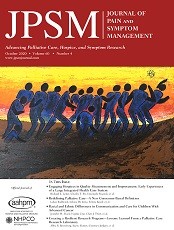Courtney S Campbell, Margaret A Black

Abstract
The legalization of physician-assisted death in states such as Washington and Oregon has presented defining ethical issues for hospice programs because up to 90% of terminally ill patients who use the state-regulated procedure to end their lives are enrolled in hospice care. The authors recently partnered with the Washington State Hospice and Palliative Care Organization to examine the policies developed by individual hospice programs on program and staff participation in the Washington Death with Dignity Act. This article sets a national and local context for the discussion of hospice involvement in physician-assisted death, summarizes the content of hospice policies in Washington State, and presents an analysis of these findings. The study reveals meaningful differences among hospice programs about the integrity and identity of hospice and hospice care, leading to different policies, values, understandings of the medical procedure, and caregiving practices. In particular, the authors found differences 1) in the language used by hospices to refer to the Washington statute that reflect differences among national organizations, 2) the values that hospice programs draw on to support their policies, 3) dilemmas created by requests by patients for hospice staff to be present at a patient’s death, and 4) five primary levels of noninvolvement and participation by hospice programs in requests from patients for physician-assisted death. This analysis concludes with a framework of questions for developing a comprehensive hospice policy on involvement in physician-assisted death and to assist national, state, local, and personal reflection.
Campbell CS, Black MA. Dignity, death, and dilemmas: A study of Washington hospices and physician-assisted death. J Pain Symptom Manage. 2014 Jan;47(1):137-153.